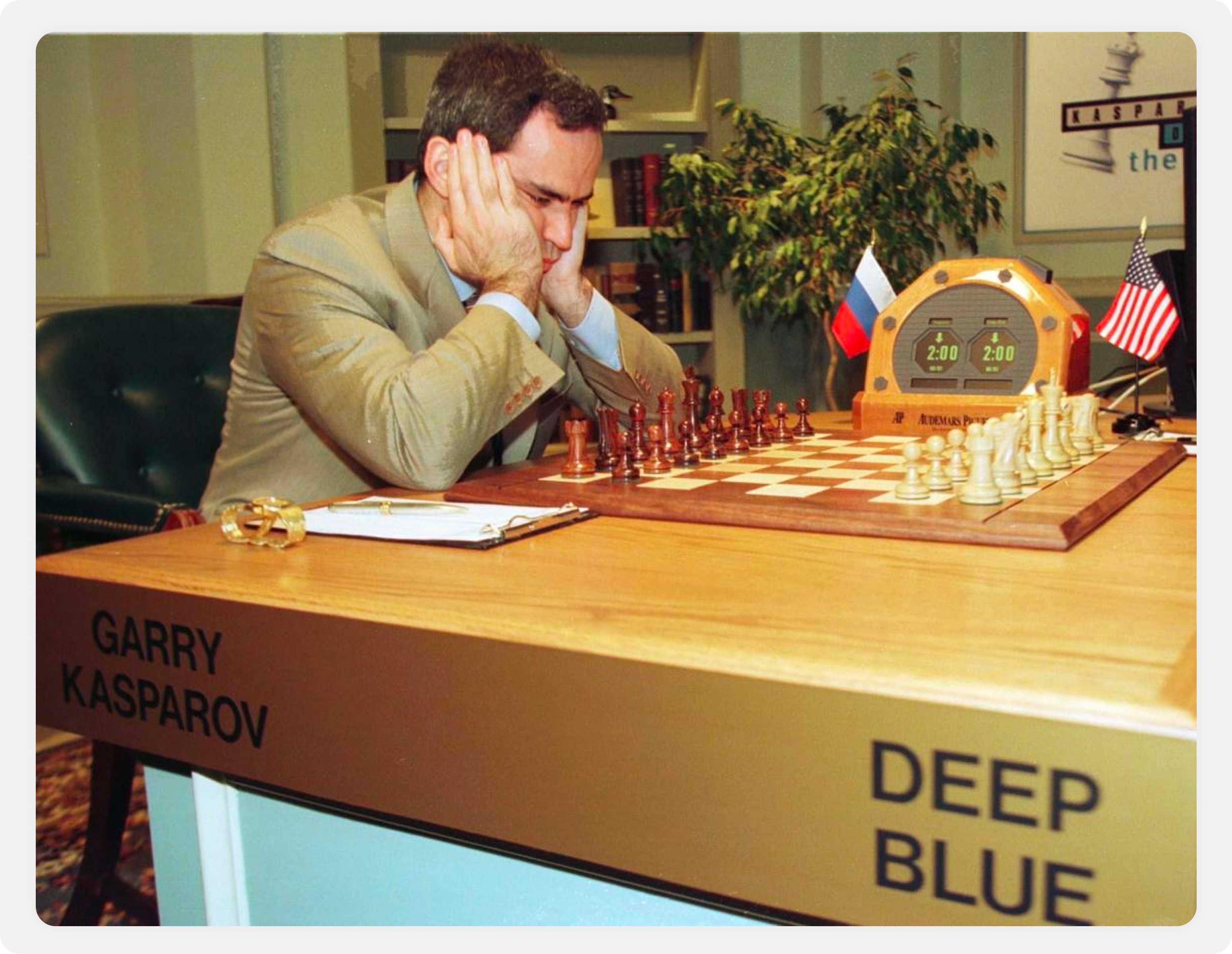AI < AI + Humans
Near the top of the Gartner Hype Cycle for Generative AI is the fear that advanced artificial intelligence will “take our jobs”. The reality is that throughout human existence, the inverse has always been true — the introduction of new technologies has only ever increased the number of jobs available over time. Certainly, some specific jobs will become displaced — horseshoeing, as an example, was displaced by horseshoe manufacturing after 2,000 years. And then, horseshoe manufacturing was itself displaced by the automobile less than a hundred years later.

Innovation does not necessarily destroy occupations, but it does change the way we work. Historically jobs lost in outpaced fields due to technological development are recovered by a large margin in new areas; while some human professions are lost to automation, many net-new careers are created or boosted in the areas affected by technological advancement. A report by the Institute for the Future (IFTF) estimated that nothing less than 85 percent of the jobs that will exist in 2030 haven’t even been invented yet. The future is on its way.
The Potential of the Human with the AI
Let’s look back one hundred years ago to 1923, when IBM had roughly 3,000 total employees; today, in 2023, IBM employs over 3,000 designers alone — with a global workforce of almost 300,000 people! Even after equipping every single employee of IBM with a super computer in their pocket more powerful than the one that sent a man to the moon along with the most powerful graphics programs ever made, there are more designers today than the totality of employees at IBM a hundred years ago.
The CFO of a Fortune 100 could do the job with a pencil and paper ledger — but, why would they? It would be significantly slower and prone to tremendous inaccuracies. The introduction of the personal computer, the spreadsheet, the pivot table, and the Internet has not displaced the CFO, it has empowered the role. The finance departments of the Fortune 100 are magnitudes larger than they were 100 years ago, despite the introduction of incredible financial computing and automation tooling. There are just as many bank tellers today as there were at the introduction of the ATM.
It’s an inevitability that AI will advance beyond human capabilities in almost every profession; however, the conversation is not about the AI versus the human — it’s about the potential of the human complemented with the AI. AI does not take away, AI is a tool that allows us to do more!
A Pivotal Moment in Computing History
On February 10, 1996, IBM’s Deep Blue beat Garry Kasparov, a chess Grandmaster — it was a pivotal moment in computing history when a computer beat a human at chess for the first time. While no human has beaten a computer at chess in over 15 years, a human with a computer can always beat a computer at chess.

Today, AI can detect cancer faster and with more reliability than the best oncologist — however, an oncologist with AI can beat the AI every-time. We see the same thing with fighter pilots — AI outperforms human fighter pilots in every simulation, but fighter pilots armed with AI beat the AI every-time.
Third Offset Strategy
In 2010 the Department of Defense took learnings from the chess world and instituted their "Third Offset Strategy"; an approach that relies not just on technology but on the one American advantage our adversaries can’t simply copy or steal: our people (our talent). The DoD refers to this advantage as “human-machine teaming.” The chess world, which in many ways invented the idea, calls it a “centaur.” Machines alone can beat the world’s best chess master easily, but human-machine teams can beat that machine – a very counterintuitive result.

The Third Offset Strategy acknowledges the fact that traditional U.S. military technological superiority was being eroded, particularly in the face of rapid technological adoption and advancements by potential adversaries. The Third Offset is rooted in several key principles that are applicable to how today's businesses might evaluate their own competitive landscape:
Human-Machine Collaboration: Instead of replacing people with machines, the goal is to use technology as a force multiplier. This might involve using artificial intelligence (AI) to sift through vast amounts of data faster than a human can alone, allowing human decision-makers to act more quickly and with better information.
Human-Machine Teaming: This refers to humans working in tandem with autonomous systems in the field or workplace. An example within the DoD, this would be a fighter pilot working in conjunction with unmanned aerial vehicles (UAVs) or drones in a combat scenario.
Advanced Computing and AI: The Third Offset recognizes the transformative power of AI and machine learning. By integrating these technologies, we can better achieve better predictive analytics, develop advanced autonomous systems, improve logistical operations, and bolster competitive advantages.
Networked and Distributed Workforces: By connecting platforms, sensors, and systems across domains, individual teams, and business units, organizations can increase their situational awareness and act more cohesively and rapidly. Data knows no silo.
By using automation tooling and AI to complement human capabilities, the concept behind the Third Offset Strategy is to provide organizations with a competitive advantage in the modern market. The emphasis is on merging the unique problem-solving abilities, creativity, and intuition of human talent with the processing power, speed, and data-crunching abilities of modern computing systems and AI models.
Conclusion
Human Intelligence + AI is more powerful than either alone. Robots will always beat humans, humans with robots will always beat robots. From chess grandmasters to surgeons to fighter pilots, A.I. has proven itself a stronger complement than competitor.
Marty Ringlein
General Partner





